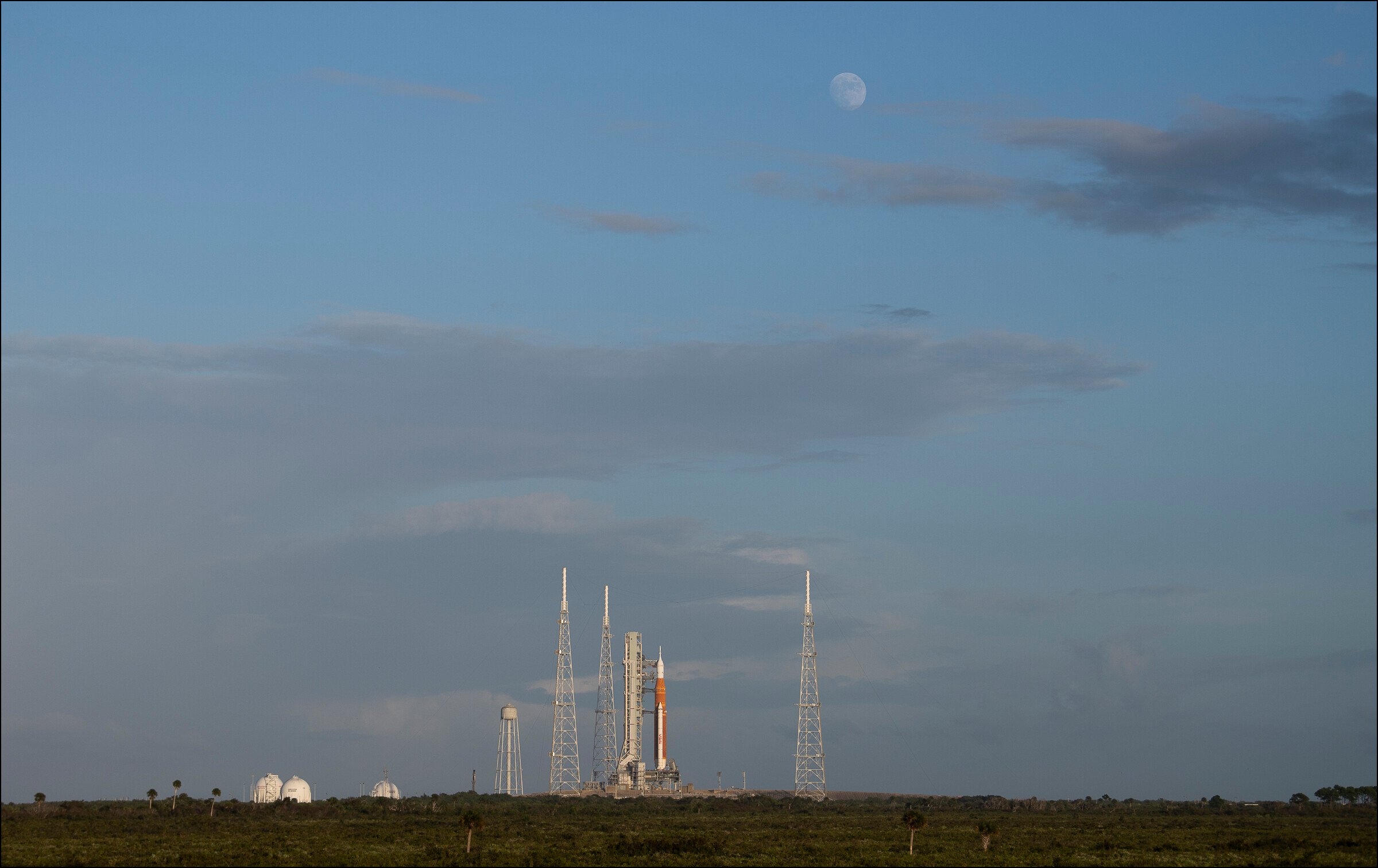Prime
Govt seeks Shs100b for satellite works

The minister of Science, Technology and Innovation, Dr Monica Musenero (centre), engineers Bonny Omara (left) and Edgar Mujuni, celebrate Uganda’s first ever satellite that was launched into space in the US on Monday. The government held a function at Kololo Ceremonial Grounds to view the exercise live. PHOTO / ABUBAKER LUBOWA
What you need to know:
- This information is coming a day after the country’s first satellite was launched on its behalf by the American space agency, a development which has been criticised by a section of the population that believes venturing into space science is a waste of resources because there are urgent needs of the population to be met.
The government intends to spend a total of Shs104.5 billion to develop, launch and operationalise two satellites, including the one launched on Monday, a draft budget obtained by the Monitor indicates.
The budget is for the national Innovation, Technology Development and Transfer Programme Implementation Action Plan for 2020 to 2025.
This information is coming a day after the country’s first satellite was launched on its behalf by the American space agency, a development which has been criticised by a section of the population that believes venturing into space science is a waste of resources because there are urgent needs of the population to be met.
But the government defended the programme, saying it is essential for national development by improving the accuracy of weather and disaster prediction, mineral mapping, disease and border monitoring.
According to the document obtained by this newspaper, of the Shs104.5b, Shs15.5b will be spent on the establishment and operationalisation of the Space Science and Aeronautics Technology Agency to lead the advancement.
Up to Shs73.4b will be spent on the development and launch of two satellites and the remaining Shs15.6b will be used to establish a satellite ground station in Mpoma, Mukono, according to the draft budget.
Dr Monica Musenero, the minister for Science and Technology, while commenting on the budget for the satellite project, said they will compile and communicate the amount that has already been spent and what is still needed for the advancement.
“The space programme was started by the former Ministry of Science, Technology and Innovation. It was handed over to the science, technology and innovation secretariat which has been in existence only since June 2021,” she said.
“The project has so many components and we have not compiled to determine what we have spent on the project. We had students training in Japan since April 2020. There are three masters students who have been working and we had to pay their tuition and spend to keep them there,” she added.
Dr Musenero, still without attaching costs, said they have trained around 20 Ugandans to become specialists in space science to give Ugandans technological confidence.
“Even before taking these three engineers [who developed the satellite that was launched] to Japan, we have been training engineers in different countries, we have 20 other engineers and out of this, 12 have PhDs not only in satellite development but radar and other technologies that we are going to deploy. These people have been gathered into a national think tank to have a very focused programme,” she said.
Dr Musenero added that they have spent money on the renovation and setting up of the earth station for receiving and commanding communication from the satellite. She didn’t attach costs.
“It (the earth station in Mukono) has been in existence since the 1970s and so it was in very bad space. The rest of the cost of the programme, we are going to know after the task force established to assess the needs has packaged together what it is going to require and the primary components. That is when we will be able to compile the whole cost,” she said.
In 2019, the government reportedly committed Shs7 billion to the space programme, but the minister was not willing to discuss the details.
Public view
But some Ugandans are not interested in the entire programme, saying there are urgent issues to address in the country. Ms Beatrice Asio, a social scientist from Mbale District, said on social media after yesterday’s satellite launch: “I wish they had used that money for buying more hospital equipment that saves people from going to India, Turkey and London for treatment.”
She added: “People who go for medical tourism end up being finished there without us seeing them, at least at home here, you can travel to Mulago Hospital and take care of your relative.”
Mr John Bagala, a resident of Kampala, said on Facebook: “Pretence aside, what is the cost-benefit of the whole activity???”
However, Dr Abubaker Matovu, a lecturer at the Makerere University’s Department of Electrical and Computer Engineering, who has knowledge of space science, said it is not true Uganda is investing in the wrong area. He said Uganda is not the first African country to invest in space science.
“South Africa and Ethiopia are some of the African countries with satellites in space. They have been developing a lot of technology around that,” he said.
“The one that was launched has basic things like a high-resolution camera that can take pictures from far off distance. From the pictures, they can take some readings to predict landslides and weather. We are not focusing on the wrong area. Everything has a start. You first understand what people are doing then you can customise to meet the interests of Ugandans,” Dr Matovu added.
According to Space Generation Advisory Council, a non-profit organisation that promotes space science in Africa, 21 years after the first African satellite, SunSat-1, was launched into space by South Africa in 1999, a total of 41 satellites have been launched by different African countries.
The organisation said Egypt leads the way with nine launched satellites, followed by South Africa with eight, Algeria with seven, Nigeria with six, and Morocco with three. Ghana, Sudan, Ethiopia, Angola, Kenya, Rwanda, Mauritius and now Uganda have launched at least one.
Globally, the number of satellites in operation is estimated to have increased over years to 3,371 by the end of 2020, according to Bryce Space and Technology.
Significance
Dr Doreen Agaba, the government’s head of space science, further explained that the satellite will take images of different categories which will support farmers, infrastructure development and mineral mapping.
“Based on the capabilities, we will be able to extract information from these images for weather prediction, monitoring vegetation cover to fight climate change, mineral mapping and disaster prediction and prevention,” she said.
The past limitations in the prediction of disasters, coupled with the hesitancy of the communities at risk to respond to alerts, have caused the loss of lives to disasters such as landslides, mudslides and floods. The inaccuracies in weather prediction have in the past years caused significant losses to farmers and affected food security, in a country where around 70 percent of the citizens rely on agriculture for livelihood.
Cost of a satellite
The satellite development, according to an Internet search by our reporter, costs somewhere between $500,000 (Shs2b) to $400m (Shs1.5 trillion), depending on size and what it can do.
Uganda’s satellite is in cubic shape, measuring about 10 cm on both sides, which is about the length of a set ruler, according to information from the developers. This size, according to Alén Space, a Spanish company that designs, constructs, and develops software and hardware for artificial satellites, can be developed at around 500,000 euros (around Shs2b).
“Satellites are small things that they can design through a small lab experiment. There is a new technology that is coming up which makes designing a satellite that can be deployed into space easier. Ours is a basic one, but they will get advanced over time [as they develop more satellites,” Dr Abubaker Matovu, a lecturer at the Makerere University’s Department of Electrical and Computer Engineering, said.
The earth station in Mukono, which information and commands the satellite, consists of an antenna, antenna control unit (for polar orbiting satellite), receiver, and synchroniser (for the high-resolution ground station), among others. A quick Internet search by our reporter also found that establishing this station is upwards of $1m (Shs3.8b) based on the types of equipment installed but there are other costs associated with the human resource for running and commanding the satellite.
Our Internet search also found that cost of launching a satellite ranges from $1m (Shs3.8b) to $200m (Shs750b) depending on the size of the satellite, where the satellite is placed in space and the likelihood of success or failure of the launch and deployment –the value of the space agency. Mr Edgar Mujuni, one of the satellite developers, said the launched satellite has a lifespan of three to five years.




